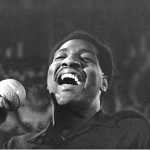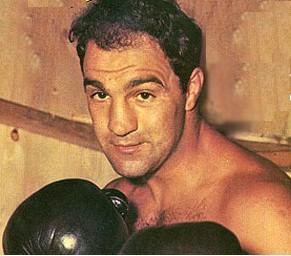The Greatest Voices Project: #30-26
[To read an introduction to The Greatest Voices Project, click here.]
[To see earlier installments, follow these links: #50-#46 … #45-#41 … #40-#36 … #35-#31.]
————————-
The powerhouse voice behind the group Heart, Ann Wilson is far more than just a rock and roll singer. Ann’s soaring voice and strong persona made audiences want to hear her sing more and more. From the classic album “Steamboat Annie” through power ballads from the 1980s, Ann Wilson’s voice along Nancy Wilson’s backing and guitar work, made Heart an undeniable musical group.
One of Heart’s greatest traits was the ability to choose songs that fit Ann Wilson’s high register, but also songs that naturally fit her ability to sing with a great deal of power. It would be hard to think of a female rock singer since the height of Heart’s popularity who has not listened to and learned from Ann Wilson’s great voice.
While a lot of songs could be used to showcase Ann Wilson’s powerful voice, “Alone” seems to capture it the best. Enjoy the original music video (and, please, don’t ask what Nancy is doing riding a horse in the middle of it).
———————————————
A singer who had his biggest hit just following his death, Otis Redding is best known for his smooth performance on “(Sitting On) The Dock of the Bay.” Redding’s voice was more than just that one song, though, as he was able to sing both smooth ballads and powerful tones on more uptempo songs.
Redding earned the nickname “The King of Soul” early in his career, and carried it throughout his brief singing life. One month prior to the release of “Dock of the Bay,” Redding was killed in a plane crash. With the maturity and control in his voice, it is hard to believe that he was just 26 years of age when he died.
Redding’s album “Otis Blue” is a classic, and showcases the singer’s ability to sing nearly any type of music. If you didn’t know, this is the album that contains Redding’s version of “Respect,” released before Aretha Franklin turned it into an iconic song. (If you’ve never heard Redding’s version, look it up on YouTube. It’s amazing.) But the song that, in my opinion, best showcases Redding’s smooth singing style is “These Arms of Mine.” Enjoy this great song.
—————————————
When she arrived on the scene, Christina Aguilera was thought of as just another teenage “bubble gum” singer. As she did more live shows, and stretched the types of music she sang, though, it became obvious that Aguilera had vocal talent that deserved attention. It didn’t take long for her to gain widespread acclaim from critics for her vocal ability, and for her extremely emotional singing.
Each time I see Aguilera sing, I am blown away at such a powerful voice coming out of such a small person. But her talent is undeniable, and one of my favorite qualities is that she will sing nearly any type of music. To prove that, here is a live session of Aguilera singing “Climb Every Mountain” from “The Sound of Music.”
——————————————-
From his days with Journey through a great solo career, Steve Perry’s high register set him apart from nearly every other singer on the radio during the 1970s and 80s. His amazing voice also made him a frequent duet partner with many stars.
Some have said that Perry’s voice is naturally higher than a normal tenor range, calling it “Tenor contraltino.” Being able to sing in full voice at such high notes has made his songs very hard to duplicate, and leaves his voice as the legacy behind such hits as “Don’t Stop Believin’,” “Any Way You Want It,” and the solo hit “Foolish Heart.”
Besides range, though, Perry’s control is his major asset, as he is able to hold notes and register volume needed to match the emotion of each song. While there were many bands that were grouped together as “arena rock” bands, Journey stood out due to Perry’s voice, and his solo career helped cement his place as one of the greatest voices ever recorded.
While it is not a song most guys like to admit they like, “Open Arms” best shows off Steve Perry’s amazing range. In fact, Lionel Richie stated that, the first time he heard Perry sing it, he thought it had to be fake. The story is told that, as the song was being written, the band kept going up in key until it was at the very top of Perry’s natural range. The result was a classic ballad. Here it is.
———————————–
One of the most unique voices, and influential singers, in Motown history, Marvin Gaye’s soul, rock, jazz, and R&B singing made him a favorite of fans of all sorts of musical types. If there is one word that describes Gaye’s voice, it has to be “smooth.” I don’t think Marvin Gaye would ever be considered a powerful singer, but his smooth, soulful voice was always at the forefront of every record he ever released.
The album “What’s Going On,” and its title track helped Gaye show that he was more than just a Motown single-releasing hit-maker. But from “I Heard It Through the Grapevine” in the 1960s to being considered a musical icon in the early 1980s, Marvin Gaye’s career spanned at least two generations.
Sadly, Gaye was killed by his own father as the singer tried to stop an argument between his parents. Gaye was just a few days shy of his 45th birthday, but his musical legacy was already secure.
Marvin Gaye was able to bring a certain level of smoothness to nearly any song. Never was that on display more than in 1983, when he was asked to sing the national anthem at the NBA All-Star game in Los Angeles. Instead of singing acapella or with some huge musical arrangement, Gaye walked out to center stage with just a rhythm track. The result was “must see TV.” Enjoy Gaye’s rendition of the Star-Spangled Banner (which, by the way, he was already known for, as a version of it was the first video ever played on VH1).








One Comment
Pingback: